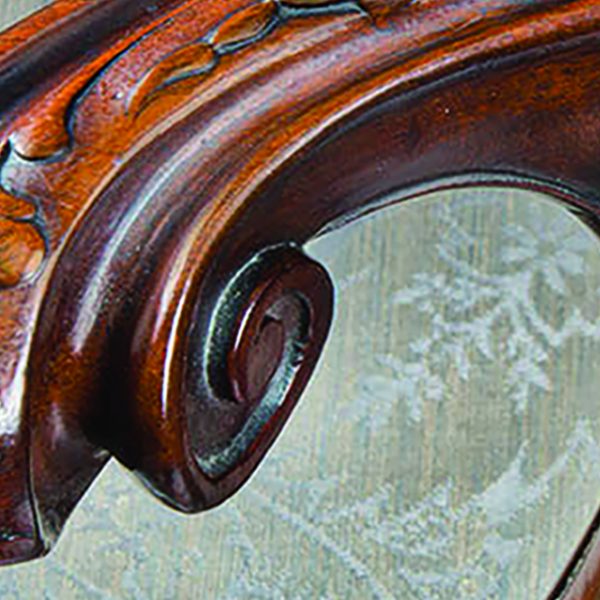Unlikely Beginnings: Knoll Textiles and WWII
 The founders of the Knoll furniture company, Hans Knoll and Jens Risom, would never have assumed that they were beginning a leading, imaginative firm that would influence other designers for decades. In their early careers, their methods were more patchwork quilt than handmade upholstery. When the two men began collaborating, their timing could not have been worse, as explained in Knoll Textiles, 1945-2010, edited by Bard Graduate Center curator Earl Martin. Knoll, a furniture seller, hired Risom, a designer, in 1941, nicely between the end of the Great Depression and the beginning of WWII. Risom had just left off working under interior designer Dan Cooper, for whom he created contemporary fabric. Of the fabrics Risom said, “I don’t think they sold well, but I don’t think anything sold well in those days.” When he and Knoll began working together, the patchwork methods came in as they began selling consumer goods in a harsh market. For one of their first furniture commissions, they “just went out and bought the fabrics.” Hardly what one would expect from a company that would eventually produce Knoll Textiles.
The founders of the Knoll furniture company, Hans Knoll and Jens Risom, would never have assumed that they were beginning a leading, imaginative firm that would influence other designers for decades. In their early careers, their methods were more patchwork quilt than handmade upholstery. When the two men began collaborating, their timing could not have been worse, as explained in Knoll Textiles, 1945-2010, edited by Bard Graduate Center curator Earl Martin. Knoll, a furniture seller, hired Risom, a designer, in 1941, nicely between the end of the Great Depression and the beginning of WWII. Risom had just left off working under interior designer Dan Cooper, for whom he created contemporary fabric. Of the fabrics Risom said, “I don’t think they sold well, but I don’t think anything sold well in those days.” When he and Knoll began working together, the patchwork methods came in as they began selling consumer goods in a harsh market. For one of their first furniture commissions, they “just went out and bought the fabrics.” Hardly what one would expect from a company that would eventually produce Knoll Textiles.
Wartime shortages, however, demanded the creativity that is now uniformly expected from Knoll. The U.S. military needed raw materials and factories to go from armchair to arms. Furniture stuffing like down and feathers now filled soldiers’ sleeping bags and flight suits. Printed fabrics and even cotton was expensive and scarce. Accordingly, Risom’s wartime designs included furniture that customers could assemble at home without screws and nails. What most increased Knoll’s reputation, however, and helped spur on the creation of a separate textile division in 1947, was the company’s use of cotton webbing on their pieces. The new form of upholstery created a “utilitarian” look that reflected the wartime market, but it was the utilitarianism that the design community considered contemporary and original. To find enough cotton, Knoll even bought cast-off fabrics from the government—the cotton belting may not have passed inspection for parachutes, but it was going to look great on the living room sofa. Although Knoll’s textile division was not designated as an individual branch until the end of the war, it was already close to becoming a well-recognized and respected brand.



